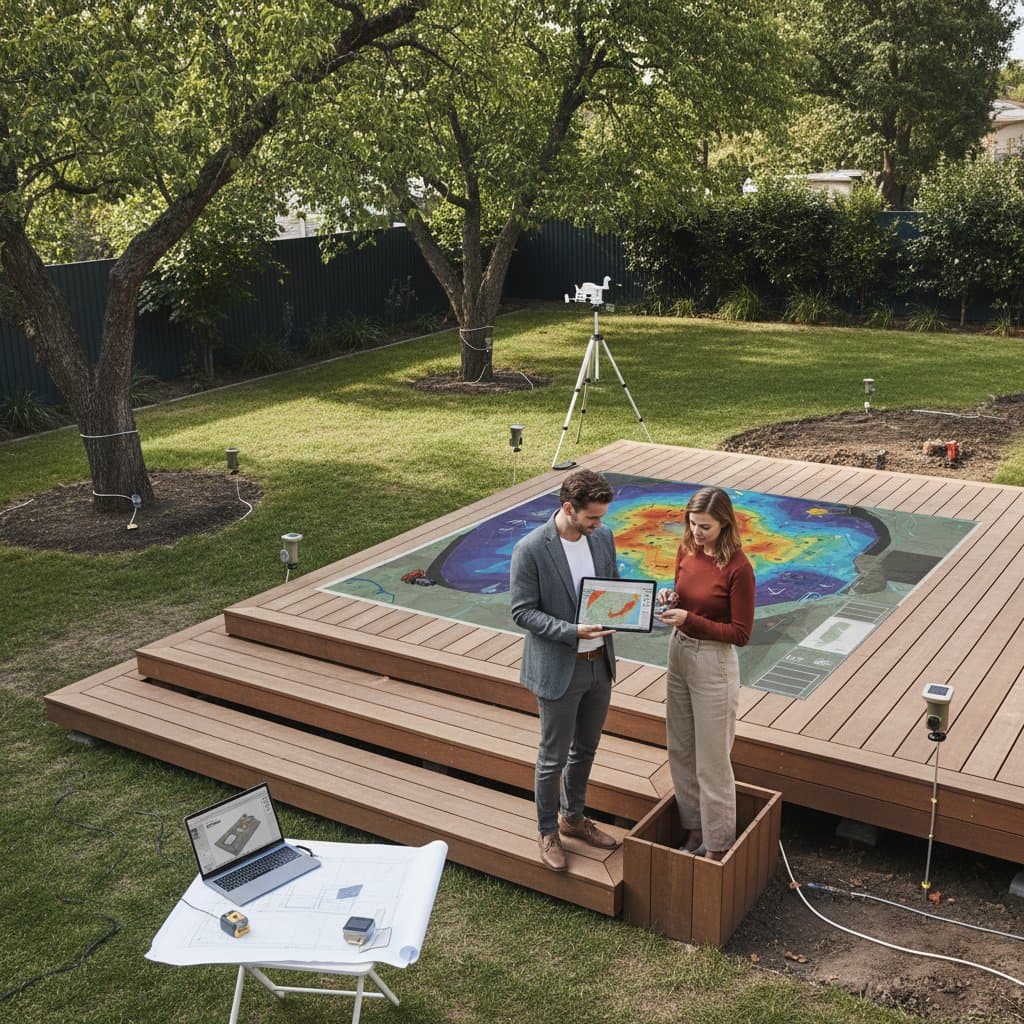The Glow Effect: UV-Reactive Plants for Balcony Nights
A quiet balcony transforms at night when ultraviolet light interacts with certain plants. These UV-reactive species produce a subtle luminescence, creating a serene and enchanting atmosphere in compact outdoor spaces. This guide provides detailed recommendations for selecting appropriate plants, installing safe lighting, and maintaining healthy growth to achieve a vibrant nighttime display.
Overview
UV-reactive plants exhibit vivid fluorescence or enhanced coloration under ultraviolet light. Specialized pigments in their leaves, petals, or stems absorb UV rays and emit visible light, resulting in a natural glow without any need for chemical modifications. The focus remains on simple setup and consistent care to develop a balcony garden that thrives in low-light conditions while requiring minimal daily attention.
Tools and Materials
Gather these essential items to begin your project:
- Portable UV or black light lamps, selecting one or two based on the balcony's dimensions
- Weather-resistant extension cord suitable for outdoor applications
- Digital moisture meter for precise soil hydration monitoring
- Fine-mist spray bottle dedicated to leaf hydration
- Protective gloves and UV-filtering safety glasses for handling equipment and treatments
- Terracotta or plastic containers measuring 10 to 12 inches in diameter, each equipped with drainage holes
Organize these materials in a designated area prior to starting to minimize risks such as electrical exposure or excessive soil saturation.
Smart Plant Choices
Select from these reliable UV-responsive varieties, each offering distinct visual effects:
- White petunias and sweet alyssum: These produce soft violet reflections, ideal for edging containers.
- Neon pothos (Epipremnum aureum 'Neon'): Displays bright lime-green fluorescence, perfect for trailing over railings.
- Coleus (Plectranthus scutellarioides): Reveals intricate pink and magenta patterns that intensify dramatically.
- Maidenhair ferns (Adiantum spp.): Exhibit delicate shimmering along frond edges for a subtle ethereal quality.
- Spider plants (Chlorophytum comosum): Show slender white stripes that illuminate like fine threads against green foliage.
Begin with three to four types to experiment with combinations. Pair upright growers with cascading ones to create layered visual interest and optimize light distribution.
Steps
Follow these sequential instructions to establish your glowing balcony garden:
- Prepare the space: Remove accumulated debris and inspect railings for stability to ensure a secure environment for wiring and pots.
- Arrange containers: Space them at least 6 inches apart to promote adequate air circulation and prevent moisture buildup.
- Prepare the soil: Fill pots with a well-draining potting mix enriched with compost or perlite; aim for consistent moisture without waterlogging.
- Plant strategically: Position taller specimens, such as coleus, at the rear, with lower plants like alyssum in front to allow even light penetration across all levels.
- Mount the UV lamps: Secure fixtures 24 to 36 inches above the plants, routing cords along walls or hooks to avoid contact with water sources.
- Activate and calibrate: Connect to power at dusk and observe the reflections; fine-tune lamp positions for uniform illumination without hotspots.
- Initiate hydration routine: Apply a light mist to foliage one to two times per evening to sustain optimal humidity levels.
These measures facilitate balanced development and prioritize electrical safety throughout the process.
Safety Tips
Avoid direct exposure to UV bulbs during operation, as they can cause eye strain or skin irritation. Utilize safety glasses whenever repositioning lit fixtures. Elevate extension cords above ground level to eliminate tripping hazards and water accumulation risks. Perform weekly inspections of connections for signs of overheating or damage. Immediately disconnect and examine any equipment showing intermittent operation or unusual behavior.
Troubleshooting
Should the glow appear diminished, evaluate the bulb's intensity first; UV output degrades over time, necessitating replacement every three to six months depending on usage. For lackluster foliage, gently wipe leaves with a damp microfiber cloth to remove dust that obstructs pigment reflection. Persistent yellowing typically indicates excess moisture; allow the top inch of soil to dry completely between waterings.
In cases of mold development, increase spacing between pots and prune affected areas promptly. Enhance ventilation by introducing a low-speed oscillating fan directed away from direct plant contact. Monitor for common pests like aphids, which may congregate in humid conditions; treat with a mild insecticidal soap if detected early.
Budget and Time
Initial costs range from fifty to eighty dollars, covering two UV lamps, three pots, quality soil, and young plants from a local nursery. The entire setup process, from site preparation to initial lighting test, requires approximately two hours. Ongoing care involves ten to fifteen minutes daily for misting, watering checks, and lamp adjustments, ensuring sustained performance with little disruption.
Maintenance
Apply a balanced, diluted liquid fertilizer biweekly during the growing season to support pigment production and vigor. Rotate pots weekly to expose all surfaces equally to UV light, preventing uneven growth. Refresh the soil annually or as nutrients deplete, incorporating fresh organic matter for continued vitality. Clean lamp surfaces with a dry, soft cloth monthly to preserve maximum light output and efficiency.
Seasonal Reminders
During colder periods, relocate sensitive tropicals like pothos to an indoor location with indirect sunlight, supplementing with UV lamps as needed. Program timers to run lights for three to four hours nightly, simulating natural dusk conditions. In summer, prune overgrown sections by one-third to control size and encourage bushier forms that enhance glow density. Routinely check undersides of leaves for pests, particularly in high-humidity environments, and isolate any infested plants to protect the collection.
Bringing the Glow to Life
Start small this evening with a single UV lamp and two compatible plants positioned near your seating area. As the setup evolves, incorporate additional varieties for richer color palettes and dynamic trailing elements. Maintain tidy wiring, nutrient-rich soil, and pristine bulbs to sustain the installation. Ultimately, this approach yields a tranquil balcony oasis that provides restorative illumination and a sense of wonder after daily routines.







